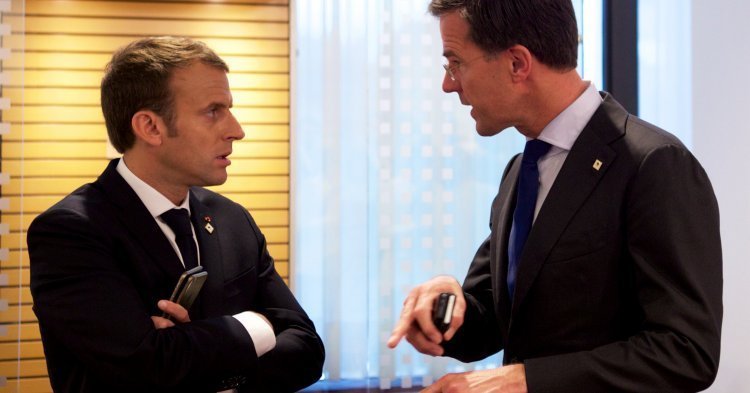European People’s Party (EPP, right-wing and centre-right coalition), Socialists & Democrats (S&D, left-wing coalition) or Alliance of Liberals and Democrats for Europe (ALDE, centrists and liberals): several options are possible.
A necessary positioning to influence the European debate
Firstly, joining a parliamentary group is essential for LaRem if it wishes to fully participate in the proposals and deliberations. The European Parliament, currently composed of 751 MEPs coming from the 28 EU member states, is divided into political groups. [1] These political groups are organised by political affiliations, and not by nationalities: the logic is supranational, and aims at going beyond national sovereignties to promote European-wide cooperation (contrary to an intergovernmental logic, in which the interests of each State are defended in priority).
As in national parliaments, these groups embody the European Parliament’s true unity. They decide on the subjects discussed during the plenary sessions, appoint the speakers, assign the MEPs in the different committees (in charge of studying specific projects or legislative proposals, and whose composition reflects the different political forces in the Parliament), can propose motions of censure or amendments that must be voted. “Non-attached” MEPs, who do not belong to any group, are not empowered with these capabilities and are left with little influence. As such, it appears evident that LaRem MEPs will have to join a parliamentary group. Moreover, all MEPs elected under the label of a party normally have to join the same parliamentary group: it’s no use for LaRem to split between several groups.
The creation of a new group, which seems to be LaRem’s ambition, that wouldn’t reinforce the current centre but would break the right and left groups (EPP and S&D) is possible but appears difficult to implement.
First, the European Parliament’s rules of procedure specify that 25 Members coming from at least one-quarter of the member states (currently seven) are necessary to form a political group. And it is uncertain whether LaRem’s potential partners are willing to leave their current parliamentary group to form a new one, which could wield less influence in the Parliament. Even if the EPP is quite diverse, it will be hard to convince Angela’s Merkel right-wing supporters, for example, to join a centrist coalition.
Furthermore, the two big coalitions (EPP and S&D) structure the European Parliament’s political life and have always represented together at least 53% of the MEPs. Even if their representation has constantly decreased, breaking these groups appears to be rather ambitious. The first attempt of centrist alliance already took place with the creation of ALDE in 2004, in order to form a new group including both European liberals and Christian-Democrats, but it didn’t lead to the disappearance of the big coalitions. Pascale Joannin, Executive Director of the Robert Schuman Foundation, considered in June 2014 that the “only possible majority coalition is the one of the EPP and the S&D, an alliance of the right and the left. There is no other possibility”.
Going beyond the right-left divide
Last July, Emmanuel Macron declared that “the true border splitting Europe is the one which separates progressives from nationalists”, and carries on the project that he defended in France in front of Marine Le Pen during the presidential election. With this declaration, the French President answered Guy Verhofstadt’s call for an alliance. Indeed, for this Belgian MEP and the leader of ALDE, the creation of a common group gathering centrists and LaRem is the obvious answer. However, if the centrist group’s federalist project is close to LaRem’s, joining ALDE does not seem to be the French party’s project: “We are not ready for an alliance”, Christophe Castaner, now former head of LaRem, told Reuters last September. Indeed, joining the centrist group might not be the most judicious strategy to adopt for LaRem.
ALDE has a rather low representation at the European Parliament (68 seats), compared to the powerful left or right-wing groups (189 and 218 seats respectively). The French President can only hope to form a new group, larger than this one, after the elections in May 2019.
Further, ALDE has been destabilised after the MoDem (the French centrist party which sits as part of ALDE in the European Parliament) was accused of fake parliamentary assistant jobs, which led its President François Bayrou and ex-MEPs Sylvie Goulard and Marielle de Sarnez to resigning from the French government in June 2017. Reaffirming an alliance with the MoDem could thus be criticised. Yet, LaRem will have to find allies if it doesn’t want to be put outside the debates with the “non-attached”.
Emmanuel Macron recently met the Dutch Prime Minister Mark Rutte in willingness for the formation of a new centrist coalition around the liberal family. This partnership would enter into force after the elections to the European Parliament. By raising economic rather than societal issues, they aim at assembling the centre-right and part of the European liberal-right around their project, opposing the conservatives and aiming at creating the second political force at the Parliament. Both Macron and Rutte defeated a Europhobic right-wing populist opponent at their respective national elections and intend to reassert their pro-European project.
One can wonder, however, if their project is not openly going against ALDE’s left wing, led by Guy Verhofstadt who remains a strong potential ally. However, he is viewed as belonging to a generation of politicians who are too old for the dynamic image that Macron and Rutte wish to give and is also often seen as an obstacle to an agreement between the liberals and ALDE. Still, he remains an indispensable support within the Parliament until the next elections.
It remains to be seen if ALDE will join or reject Macron and Rutte’s project, or if it will split on social issues, which remains the most likely solution. This is not the first time that a centrist party has to choose a side at the European level. In 2007, the Italian Democratic Party hesitated between reinforcing the centrist group or one of the two big coalitions. The left group (S&D) was finally chosen, as it had revised its statutes in order to address the “democrats” and not only the “socialists”. It is thus possible that a party which claims to be centrist chooses to join one of the two big coalitions.
Nevertheless, joining one of the coalitions can also present several obstacles for LaRem, as forming an alliance with one means turning its back to the other. LaRem’s difficulty here is that the party is composed of both left and moderate right-wing members and pursues its will to assert itself as a political force going beyond this divide. Favouring one side at the other’s expense could be seen as a betrayal, especially as each coalition comprises parties whose ideologies are far from being centrist.
The EPP, for instance, comprises Sebastian Kurz’s Austrian People’s Party (ÖVP) and the Christian Social Union in Bavaria (CSU); two parties criticised for their support to the populist Hungarian Prime Minister Viktor Orbán whose party, Fidesz, is also part of the EPP. Even more sensitive, the French right-wing party (Les Républicains, LR) who fiercely affirm its opposition to LaRem at the national level is a member of the EPP. How could LR and LaRem possibly belong to the same European coalition? The problem is also encountered with the S&D, as this party comprises several French socialist MEPs who did not join LaRem after the 2017 presidential election, and occasionally insist on their incompatibility with Macron. A potential candidacy from LaRem to join a big coalition thus, for both internal and external reasons, appears complicated for the party.
Towards a division of LaRem?
If the solution of a big centrist coalition seems insurmountable it seems that LaRem will have to position itself on the right-left divide, which will be a divisive factor within the party. The choice will obviously be difficult, especially as the opinion more and more tends to draw LaRem closer to the right (6,7 on a scale of 0 (extremely left) to 10 (extremely right), according to a survey conducted by the Jean Jaurès Foundation in May 2018). This necessary positioning on the right-left divide at the European Parliament is even more paradoxical when knowing that the EPP and the S&D voted the same way concerning 73% of the decisions made since the creation of the European Parliament…



1. On 27 May 2019 at 02:47, by Nuno Replying to: European elections: which party for “En Marche” in the Parliament?
Replying to: European elections: which party for “En Marche” in the Parliament?
Finally made me understand where to cross the line betwen the left and right on the european parliment, (in the Middle of ALDE)
Follow the comments: |
|
